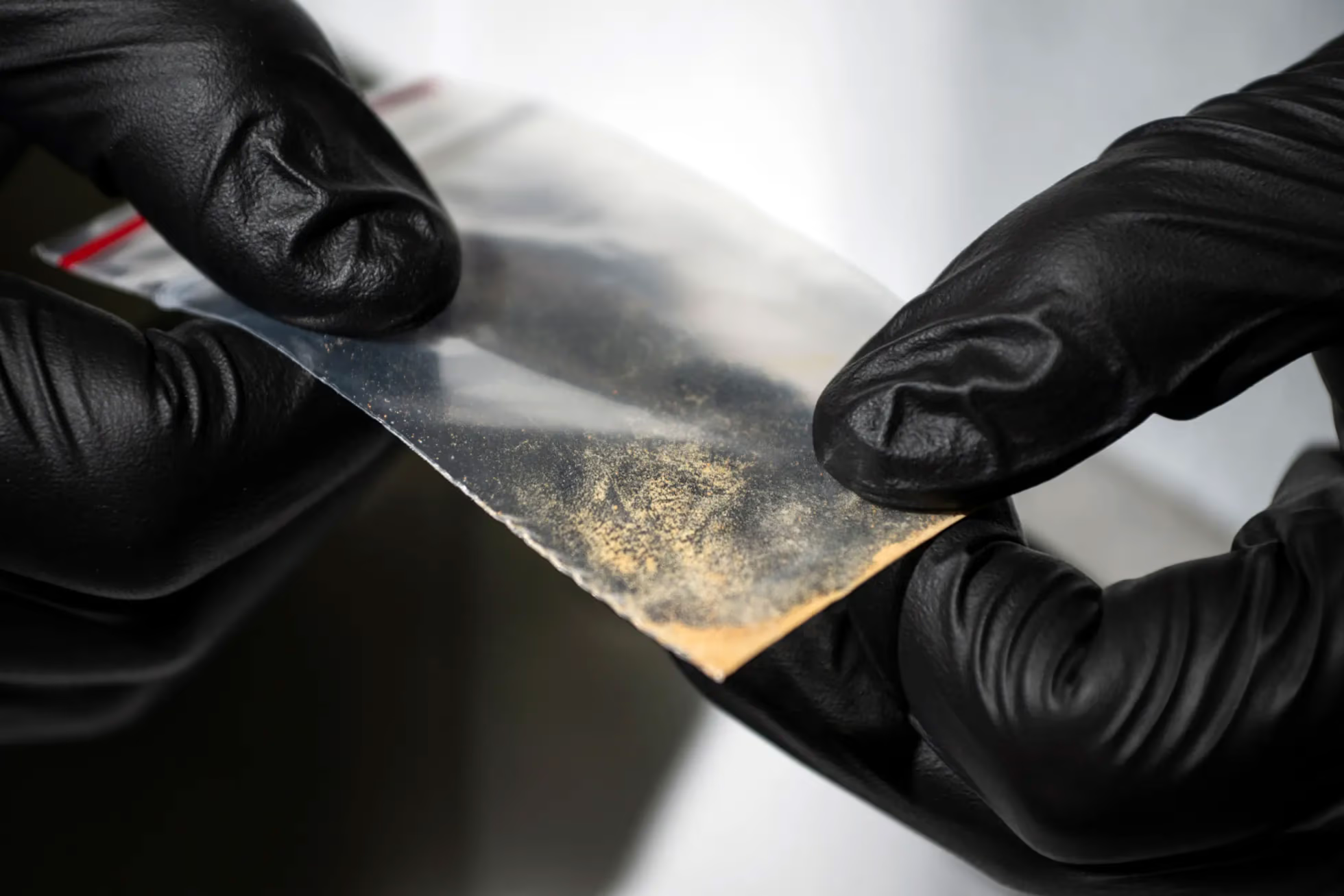A new class of drugs is spreading rapidly across the world—synthetic opioids known as nitazenes. Originally developed as powerful painkillers, they were never approved for medical use: even a microdose can be fatal. Today, nitazenes have become street drugs—cheap to produce, far more potent than heroin, and extremely dangerous.
The particular danger lies in the fact that nitazenes are often mixed with other substances to intensify their effects. In many cases, users have no idea what they are putting into their bodies. Here’s what you need to know about this deadly class of synthetic opioids.
Nitazenes are powerful synthetic opioids first synthesized in the 1950s by the Swiss pharmaceutical company Ciba, now part of Novartis. They were originally intended as analgesics, but never approved for clinical use: despite their strong pain-relieving effects and the euphoria they induce, even minimal doses of nitazenes carry a high risk of death.
Throughout the second half of the 20th century, nitazenes surfaced sporadically in different countries. They were recorded in Italy in 1966, in Germany in 1987, and in Russia in 1998. In Moscow, at least 20 people died after taking etonitazene, one of the compounds in this group. Police arrested a dealer carrying 200 packets of powdered narcotic. It was law enforcement’s first known encounter with the substance—media reports suggested it had likely been synthesized by “unemployed chemists” using readily available reagents in secrecy.
The latest wave of global nitazene circulation began six years ago. The turning point came with a shift in the drug market: fentanyl production was disrupted by China’s strict new regulations, while heroin supplies fell sharply after Afghanistan banned poppy cultivation. Illicit drug producers turned to pharmaceutical archives—and rediscovered nitazenes. In 2019, these compounds began appearing in drug seizures across the U.S. and Europe.
Nitazenes Have Spread Worldwide, Causing Hundreds of Deaths. They’re Easy to Make, Profitable to Sell, and Hard to Detect
Since 2019, more than a dozen new variants of nitazenes have emerged on the market. Between 2019 and 2024, these substances were detected in 28 countries across multiple continents—from North America to Africa and Asia—and have already claimed hundreds of lives. Official figures show that at least 485 people died from nitazenes in the UK, 320 in the U.S., 101 in Latvia, and 17 in Australia. Production is largely based in China, where the compounds are sold almost openly online. In Europe, they are often shipped by mail—sometimes disguised in packages of dog food.
Nitazenes are both highly profitable to sell and extremely dangerous to consume. They are cheaper and easier to produce than fentanyl or processed heroin, yet 50–250 times stronger than heroin and 10–50 times more potent than fentanyl. This high potency makes them easier to smuggle—smaller volumes are easier to transport—and dramatically increases profits: in Europe, the net margin on one gram of nitazenes can reach €600 or more. Often, nitazenes are sold not in pure form but as an additive mixed into other substances.
That’s what makes them especially lethal: the vast majority of users have no idea they are ingesting one of the most powerful opioids, where even trace amounts can cause respiratory failure. On the black market, nitazenes are increasingly added to other illicit drugs, as well as to legitimate prescription medications such as oxycodone or Xanax—or even vape liquids. In 2023, a 23-year-old man in the UK died after purchasing Xanax online without a prescription. Lab analysis revealed the tablets contained nitazenes.
For now, nitazenes still occupy a relatively small share of the global drug market, but experts believe their spread is only beginning. In Europe, where heroin remains the most commonly used opioid, nitazenes pose a particular threat—they are cheaper, stronger, and more readily available. In the U.S., fentanyl remains the dominant problem, killing far more people each year, but nitazenes are beginning to make their mark there as well.
Estonia and Latvia Report Rising Deaths from Nitazenes as Authorities Struggle to Stem the Flow and Replace Dismantled Networks
Estonia was the first European country to detect nitazenes back in 2019. The country already had a grim history with opioids: in the early 2000s, following the U.S. invasion of Afghanistan and a sharp drop in heroin supply, Estonia experienced the most severe fentanyl epidemic in Europe. By 2017, the situation was brought under control—but with the arrival of nitazenes, the death toll began climbing again. Between 2022 and 2023, nitazenes claimed 130 lives in Estonia—roughly half of all drug-related deaths in the country.
According to experts, the main hotspot for nitazene use in Estonia is in the Russian-speaking districts of Tallinn—Kopli and Lasnamäe. The Russian-speaking community in Estonia, analysts note, still bears traces of a “partially preserved Soviet-era criminal subculture” in which heroin once played a central role. In the 2000s, it was replaced by more potent fentanyl—and now the same pattern is repeating with nitazenes. This was explained in an interview with Postimees by Rait Pikaro, head of the narcotics division of the North Prefecture Police.
Pikaro and his colleagues emphasize that most nitazenes enter Estonia from neighboring Latvia—another country hit hard by the new drug. In 2023 alone, 101 people died from nitazenes there. Despite regular arrests of dealers, Latvian police face an unusually resilient underground market: nitazene trafficking is so lucrative that new sellers quickly take the place of those detained. “There’s big money in this game,” said Kalvis Klints of the Latvian Police’s Organized Crime Division.
